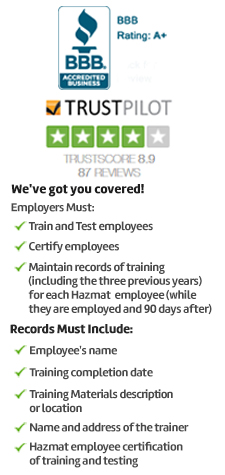
OSHA Dipping, Coating and Cleaning Training Course

Industries use hazardous chemicals for various processes which include dipping, coating and cleaning of unfinished goods. Workers involved in these processes need to have basic safety awareness and follow prescribed safety standards and practices.
This OSHA Dipping, Coating and Cleaning training course deals with safety standards, practices and regulations involved in handling hazardous chemicals in various industrial processes. Dip tanks use dangerous liquids which can pose serious health problem when come in contact with skin and other sensitive body parts. Through this course, participants will get a deep understanding on OSHA regulations and standards for constructing Dip tanks, operational risks and healthy practices.
Governing regulations
OSHA has made certain recommendations to use dip tanks when they have liquids other than water. Standard 29 1910.123 is applicable for tanks which use liquids used to change the shape, nature, colour or simply remove impurities from an object. Some of the most common processes involve are Cleaning, Coating, Altering the surface and changing the character using chemical reactions.
OSHA 29 CFR 1910.124 regulates construction of dip tanks. A dip tank must be built as per the specifications to withstand heavy load and strong chemicals and should be properly ventilated.
OSHA 29 CFR 1910.125 stipulates safety regulations for making a dip tank with safety controls and operational regulations.
OSHA 29 CFR 1910.126 provides additional protocols that are applicable to tempering tanks and also cleaning and coating processes.
Course Overview
This Safety course provides an overview of safety regulations and hazards involved in coating, dipping and cleaning operations, which include modes of exposure, sources of exposure, regulations and ways to prevent getting exposed to hazards and health risks associated with such processes.
Who Must Take this Course?
Dip tanks are used by many employees who must know the nature of chemicals and risks involved in handling them People handling these dip tanks for dipping, coating, and cleaning processes must aware of the dangers involved in their work, how to handle such chemicals safely, hazard control measures and safety compliance procedures. Workers and those managing Dip tanks must be familiar with the U.S. Occupational Safety and Health Administration (OSHA) standards to minimize the associated risks.
Course Format
Our Dipping, Coating and Cleaning Operations Training course is packed with high quality content with case studies, graphical and audio presentations as well as expert-chosen questions for self test to score high marks in the final exam.
Each successful candidate will be provided with completion certificate along with a printable wallet card.
Continuing education credits?
Each successful participant is eligible to receive 0.2 CEUs (or 2 CMEs) after completing this course.
Topics Covered
- Introduction to Dipping, Coating, and Cleaning Operations
- Key Terms
- Dipping and Coating – Overview
- Cleaning – Overview
- Flammable Liquids – Overview
- Dipping, Coating, and Cleaning – History
- Dipping, Coating, and Cleaning – Background
- Statistics for Dipping, Coating, and Cleaning Operations
- Applicable Regulations for Dipping, Coating, and Cleaning Operations
- Operations
- Dipping Operations – Ventilation
- Dipping Operations – Exhaust Air and Cyanide
- Dipping Operations – Electrostatic Detearing
- Dipping Operations – Tempering and Hardening
- Coating Operations
- Cleaning Operations – Vapor Degreasing and Stripping
- Cleaning Operations – Spray Cleaning
- Cleaning Operations – Atomized Cleaning
- Cleaning Operations – Non-atomized Cleaning
- Cleaning Operations – Hand-wipe flush
- Managing Dipping, Coating, and Cleaning Operations
- Compliance – Overflow Piping and Housekeeping
- Compliance – Bottom Drain and Conveyor System
- Compliance – Fuel Sources
- Compliance – Fire Protection
- Monitoring
- Record keeping
- Reporting
- Controls
- Procedural Controls
- Engineering Controls
- Personal Protective Equipment
- Training
- Additional Resources
- Summary
- Exam

 NEBOSH CERTIFICATE
NEBOSH CERTIFICATE NEBOSH DIPLOMA
NEBOSH DIPLOMA IOSH
IOSH SAFETY DIPLOMA
SAFETY DIPLOMA CPD UK
CPD UK ROSPA UK
ROSPA UK FOOD SAFETY
FOOD SAFETY 



